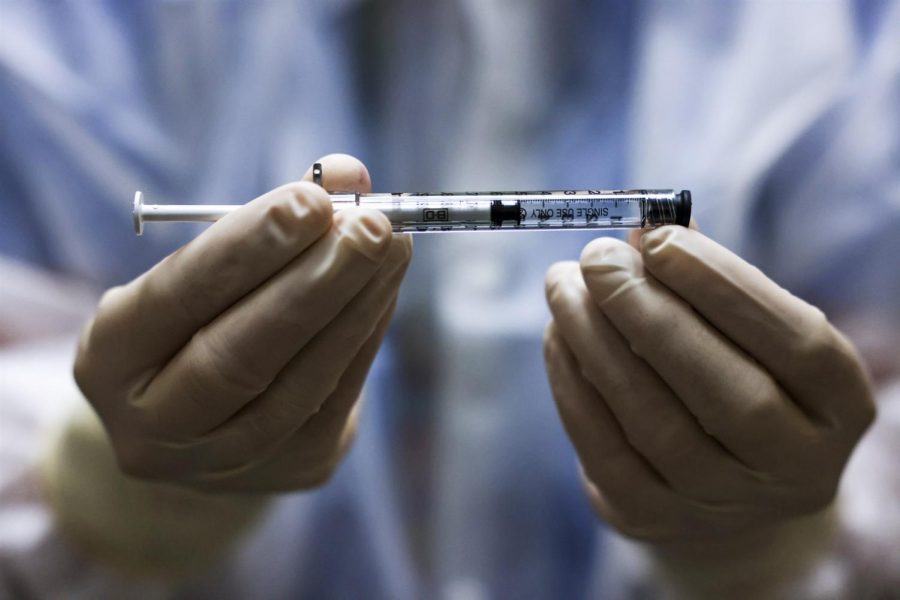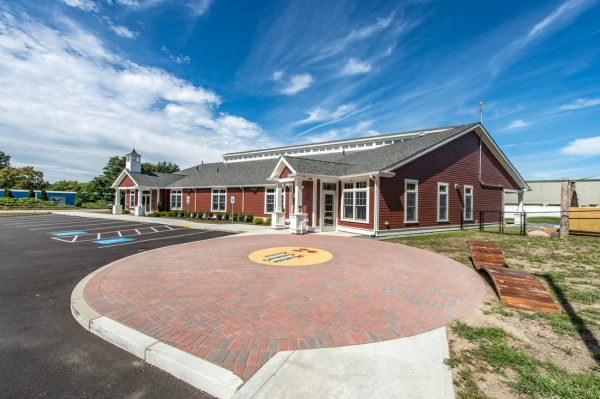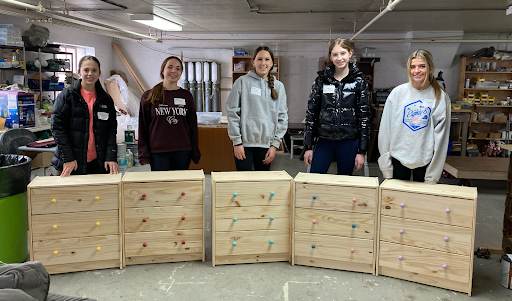The New J&J Vaccine and Registration Difficulties
(Credit: Michael Ciaglo/Getty Images via NBC News)
Getting registered to receive the vaccine in Massachusetts is something many are looking forward to as we slowly recover from the last year. However, many Montrose families had trouble booking an appointment. One student said: “It took all day to get a hold of someone to get an appointment.”
Recently a new vaccine has been approved, the Johnson & Johnson (J&J) vaccine. The vaccine was developed with a team led by Dan H. Barouch, an immunologist at the Beth Israel Deaconess Medical Center (BIDMC) in Boston. At first glance, this vaccine seems less effective than the others. It is 66 percent effective. Moderna has a 94.1% efficiency, and Pfizer has a 95% efficiency. But considering the other factors, this J&J vaccine is just as good, if not better.
While the efficiency of the Johnson & Johnson vaccine seems small compared to the others it still surpasses the expectations the FDA began with. They were willing to approve a vaccine with an efficiency over 50%. When the Pfizer and Moderna vaccines came with such high efficiency rates people were shocked. For comparison, the flu vaccine has a similar efficiency rate, and many of us still receive it every year. What is impressive about the Johnson and Johnson vaccine is that no participants in the clinical trial were hospitalized or died. The Johnson and Johnson vaccine is also much easier to distribute. It can be stored at the temperature of a regular refrigerator for up to three months. The other vaccines require temperature that a regular refrigerator or freezer cannot reach and have a much shorter shelf life. As many know, the Johnson and Johnson vaccine only requires one shot, which makes it much easier to administer. While studies show that people would much rather get a two-shot vaccine, the CDC recommends the one-shot J&J.
Massachusetts has entered phase two of the vaccine plan. People eligible for the vaccines include healthcare workers, first responders, people 65 year or older, and those with two or more qualifying health conditions. As of April, those with one medical condition were included in the eligibility list. K-12 teachers, retail and funeral workers are also among those qualified for a vaccine. In order to encourage people to schedule vaccines, anyone who accompanies an older resident to a vaccine appointment will be able to receive a vaccine. The restrictions will gradually decrease until April 19, when the vaccine will be eligible to all Massachusetts residents 16 and older.
Booking a vaccination appointment can be done online. However many have complained about a lack of organization on the website and confusion in the signup process. Carmela Silvia ‘21 said: “It was just poorly set up.” Over the course of a week and half she spent over four hours a day refreshing the website trying to get a spot. Another student said: “It took all day to get a hold of someone to get an appointment.” Many students have grandparents or other family members who have received the vaccine. Leslie Baker ‘24 said: “My grandparents had to log onto the website at midnight to get an appointment.” Most students are in agreement about the website difficulties. Those who have not experienced it firsthand have heard from friends and relatives about their difficulties. Kate Novak ‘24 agreed: “The website is very frustrating because everyone in Massachusetts is trying to get the vaccine; when my dad went there were a hundred and seven thousand people waiting in line.”
The Johnson and Johnson vaccine brings hope for a faster process of reopening Massachusetts. The CDC recently released a new guidance in regards to spending time with vaccinated people. A fully vaccinated group of people can spend time with another vaccinated group or an unvaccinated (low risk) group without using prevention methods. As more and more people get vaccinated, restrictions will slowly be lifted until we are back to a new normal. For now, precautions continue: wear a mask, stay socially distant, wash hands, and limit groups to smaller clusters — preferably outdoors.
Rosie Reale ‘24, Contributing Writer
24rreale@montroseschool.org















